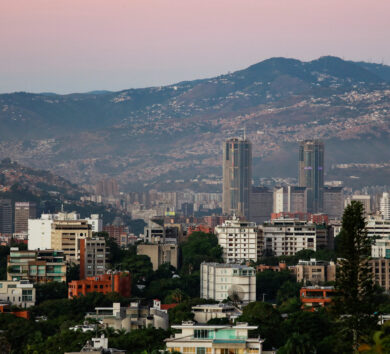

Guyana’s oil exports surged by 54% last year, reaching approximately 582,000 barrels per day (bpd), as the Caribbean/South American country continues its rapid rise in the global oil industry.
Traders and shipping data from financial firm, LSEG shows that Guyana’s rise is being driven by European refiners’ demand for easy-to-process sweet crudes from Guyana to replace some Middle Eastern grades. Since it began exporting oil in early 2020, Guyana has rapidly emerged as the fifth largest Latin American crude exporter, following Brazil, Mexico, Venezuela, and Colombia.
However, unlike the region’s typical heavy sour oil, Guyana’s lighter and sweeter crude grades have gained a significant share in Europe, where most refineries are less complex than those in Latin America and the U.S. Gulf Coast, which process heavier grades into motor fuels. Last year 66% of Guyana’s crude exports or about 388,000 bpd went to Europe, up from 62% the previous year.
Europe favouring Guyanese oil

Guyana’s oil began gaining favour in Europe following Russia’s invasion of Ukraine in 2022, which led many refiners to avoid sanctioned Russian crude and seek alternative supplies. Producers in Guyana also nearly doubled shipments to the United States last year to about 23,000 bpd, while exports to Asia increased modestly to around 139,000 bpd, according to LSEG data.
Sales to Latin America and the Caribbean remained relatively unchanged at around 32,000 bpd. The rise in exports has been facilitated by a consortium led by U.S. oil major Exxon Mobil, which has rapidly expanded output through three floating production facilities in Guyana with a fourth expected to add about 250,000 bpd of capacity this year.
Data analytics platform, Kpler says Exxon’s Fawley refinery in the United Kingdom remains the single largest taker of Guyanese crude in Europe.
Speaking with Reuters on condition of anonymity, one trader of Latin American grades commented, “Europe is the ideal market for Guyana’s crudes. Guyana’s three crude grades—Liza, Unity Gold, and Payara Gold—have been tested and adopted more quickly in Europe than in any other region due to their proximity, quality, and easy access to sellers.”
Last year, attacks in the Red Sea disrupted oil flows from the Middle East, providing crudes from Guyana and Brazil with better opportunities to find buyers in Europe explained Homayoun Falakshahi, a senior analyst of crude markets at Kpler. According to him, “higher freight costs to move oil from the Persian Gulf to the Mediterranean or Northwest Europe have made Guyanese crude comparatively more attractive to European refiners.”
Exxon, Hess, and CNOOC, which control all oil and gas output in Guyana, individually sell the barrels they are entitled to, while the Guyanese government annually awards a marketing contract to allocate its portion of output. For 2025, European trading firms, BB Energy and JE Energy won the contract for a second consecutive year in a competitive auction that included global producers.
Guyana getting premium over market prices
The Irfaan Ali administration in Guyana reported last October that it has secured a larger premium over market prices that time. Since the two trading firms are based in the United Kingdom, their successful marketing of the crudes in Europe was expected, Guyana’s energy minister Vickram Bharrat told Reuters.
The Exxon-led consortium has three active projects—Liza 1 and 2, and Payara—that were producing around 675,000 bpd late last year following upgrades. The next project, Yellowtail, is set to start this year once Exxon receives a fourth floating production vessel in the coming months.
Exxon did not comment on its Guyanese crude marketing efforts but stated last month that it expects 60% of its upstream production by 2030 to come from “advantaged assets,” including Guyana.







Comments